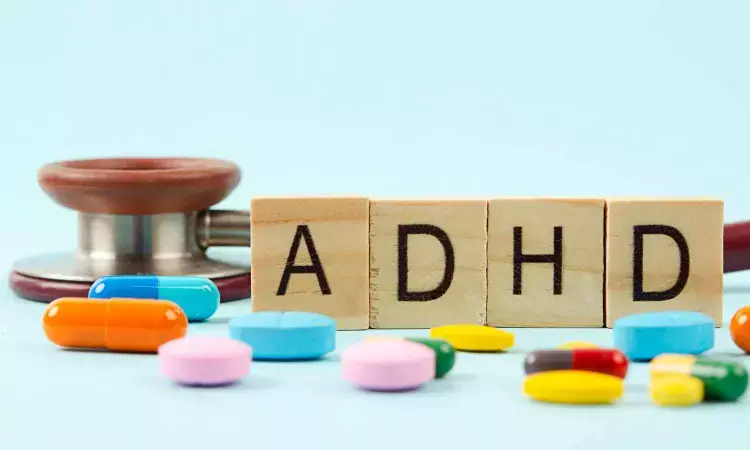- Home
- Medical news & Guidelines
- Anesthesiology
- Cardiology and CTVS
- Critical Care
- Dentistry
- Dermatology
- Diabetes and Endocrinology
- ENT
- Gastroenterology
- Medicine
- Nephrology
- Neurology
- Obstretics-Gynaecology
- Oncology
- Ophthalmology
- Orthopaedics
- Pediatrics-Neonatology
- Psychiatry
- Pulmonology
- Radiology
- Surgery
- Urology
- Laboratory Medicine
- Diet
- Nursing
- Paramedical
- Physiotherapy
- Health news
- Fact Check
- Bone Health Fact Check
- Brain Health Fact Check
- Cancer Related Fact Check
- Child Care Fact Check
- Dental and oral health fact check
- Diabetes and metabolic health fact check
- Diet and Nutrition Fact Check
- Eye and ENT Care Fact Check
- Fitness fact check
- Gut health fact check
- Heart health fact check
- Kidney health fact check
- Medical education fact check
- Men's health fact check
- Respiratory fact check
- Skin and hair care fact check
- Vaccine and Immunization fact check
- Women's health fact check
- AYUSH
- State News
- Andaman and Nicobar Islands
- Andhra Pradesh
- Arunachal Pradesh
- Assam
- Bihar
- Chandigarh
- Chattisgarh
- Dadra and Nagar Haveli
- Daman and Diu
- Delhi
- Goa
- Gujarat
- Haryana
- Himachal Pradesh
- Jammu & Kashmir
- Jharkhand
- Karnataka
- Kerala
- Ladakh
- Lakshadweep
- Madhya Pradesh
- Maharashtra
- Manipur
- Meghalaya
- Mizoram
- Nagaland
- Odisha
- Puducherry
- Punjab
- Rajasthan
- Sikkim
- Tamil Nadu
- Telangana
- Tripura
- Uttar Pradesh
- Uttrakhand
- West Bengal
- Medical Education
- Industry
ADHD Medications are on the rise among adults, finds study

Covid-19 put a halt to lot of things going on in busy lifestyle. With growing technologies people have made a lot of behavioral changes. The pandemic reportedly increased behavioral health needs and impacted treatment access.
The differential changes during the COVID-19 pandemic in incident prescription trends for ADHD, particularly for C-II stimulants, underscore the need for robust policies to address unmet needs while balancing public health concerns says a new study in JAMA Pschiatry.
To assess changes in incident prescriptions dispensed for medications commonly used to treat depression, anxiety, attention-deficit/hyperactivity disorder (ADHD), and opioid use disorder (OUD), before and during the COVID-19 pandemic.
This was a cross-sectional study using comprehensive, population-level, nationally projected data from IQVIA National Prescription Audit on incident prescriptions (prescriptions dispensed to patients with no prior dispensing from the same drug class in the previous 12 months) dispensed for antidepressants, benzodiazepines, Schedule II (C-II) stimulants, nonstimulant medications for ADHD, and buprenorphine-containing medication for OUD (MOUD), from US outpatient pharmacies. Data were analyzed from April 2018 to March 2022. Incident prescriptions by drug class (by prescriber specialty, patient age, and sex) and drug.
Interrupted time-series analysis to compare changes in trends in the monthly incident prescriptions dispensed by drug class and percentage changes in aggregate incident prescriptions dispensed between April 2018 and March 2022.
The key findings of the study are
- Incident prescriptions dispensed for the 5 drug classes changed from 51 500 321 before the COVID-19 pandemic to 54 000 169 during the pandemic. The largest unadjusted percentage increase in incident prescriptions by prescriber specialty was among nurse practitioners across all drug classes ranging from 7% (from 1 811 376 to 1 944 852; benzodiazepines) to 78% (from 157 578 to 280 925; buprenorphine MOUD).
- The patient age and sex, the largest increases were within C-II stimulants and nonstimulant ADHD drugs among patients aged 20 to 39 years (30% and 81% respectively) and female patients (25% and 59% respectively).
- Trends for C-II stimulants and nonstimulant ADHD drugs (slope change: 4007 prescriptions per month and 1120 prescriptions per month respectively) significantly changed during the pandemic, exceeding prepandemic trends after an initial drop at the onset of the pandemic (level changes: −50 044 prescriptions and −12 876 prescriptions respectively).
- Although buprenorphine MOUD dropped significantly (level change: −2915 prescriptions), trends did not significantly change for buprenorphine MOUD, antidepressants, or benzodiazepines.
Researchers concuded that "Incident use of many behavioral health medications remained relatively stable during the COVID-19 pandemic in the US, whereas ADHD medications, notably C-II stimulants, sharply increased. Additional research is needed to differentiate increases due to unmet need vs overprescribing, highlighting the need for further ADHD guideline development to define treatment appropriateness."
Reference:
Chai G, Xu J, Goyal S, et al. Trends in Incident Prescriptions for Behavioral Health Medications in the US, 2018-2022. JAMA Psychiatry. Published online January 10, 2024. doi:10.1001/jamapsychiatry.2023.5045.
MSc. Neuroscience
Niveditha Subramani a MSc. Neuroscience (Faculty of Medicine) graduate from University of Madras, Chennai. Ambitious in Neuro research having worked in motor diseases and neuron apoptosis is interested in more of new upcoming research and their advancement in field of medicine. She has an engrossed skill towards writing and her roles at Medical dialogue include Sr. Content writer. Her news covers new discoveries and updates in field of medicine. She can be reached at editorial@medicaldialogues.in
Dr Kamal Kant Kohli-MBBS, DTCD- a chest specialist with more than 30 years of practice and a flair for writing clinical articles, Dr Kamal Kant Kohli joined Medical Dialogues as a Chief Editor of Medical News. Besides writing articles, as an editor, he proofreads and verifies all the medical content published on Medical Dialogues including those coming from journals, studies,medical conferences,guidelines etc. Email: drkohli@medicaldialogues.in. Contact no. 011-43720751


